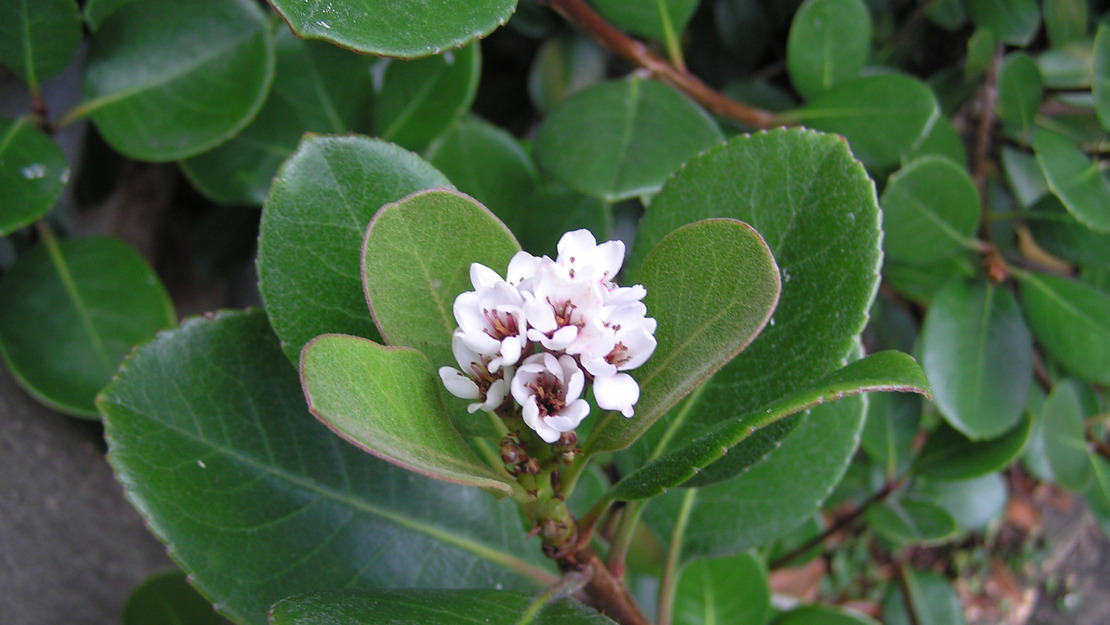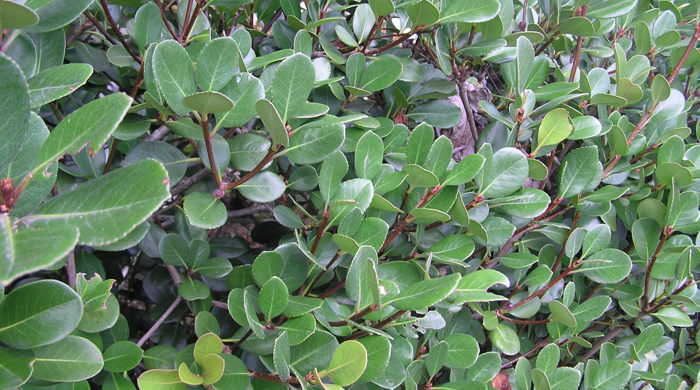Rhaphiolepis umbellata
Rhaphiolepis / sexton's bride
Family: Rosaceae
Origin: Asia

Regional Pest Management Plan (RPMP) status
- Aotea — Eradication
- Hauraki Gulf Controlled Area Notice pest
- Whole region — Sustained control
General description
Perennial shrub < 3 m tall. Flowers are white with pink/red stamens and sepals and are borne in inflorescences in July – December. Fruit is fleshy, dark purple/black and ripens in March – April.
What you need to know
To help protect our environment:
- You must not breed, distribute, release or sell rhaphiolepis/sexton's bride within the Auckland region.
- You must not plant rhaphiolepis/sexton's bride within the Auckland region, unless you are transferring an existing plant on your land to another location within the boundaries of the same property.
- You must destroy any rhaphiolepis/sexton's bride on land that you occupy if it has been planted in breach of the above rules and you are directed to do so by an authorised person.
Auckland Council will control rhaphiolepis/sexton’s bride at all sites within the Aotea/Great Barrier Island group where it is known to occur.
If you see rhaphiolepis/sexton’s bride anywhere on Aotea/Great Barrier Island group, please report it to Auckland Council at pestfree@aucklandcouncil.govt.nz.
Habitats
Coastal urban and cliff habitats, roadsides, cemeteries, hedgerows, gardens.
Dispersal
Seeds dispersed by birds.
Impact on environment
Displaces native vegetation in coastal areas.
Control
Site Management
Follow up treated areas 3 times per year. Encourage natural regeneration of native plants or replant treated areas where possible after 2-3 treatments to establish dense ground cover and minimise reinvasion.
Recommended approaches
Do not attempt to undertake control of this species on Aotea/Great Barrier Island group. Please report to Auckland Council if seen on Aotea/Great Barrier Island group.
Physical control
Method: Dig out.
Plant parts requiring disposal: Seeds.
Disposal options: Remove to greenwaste or landfill if practical.
Biocontrol
Biocontrol is currently not available for this species.
Community agrichemical control recommendations
No qualifications: Cut stump and paste freshly cut base of seedlings with glyphosate gel. Foliar spray with 100ml glyphosate green per 10L of water.
Certified Handler/Experienced agrichemical user: Foliar spray with 100ml glyphosate green per 10L of water and 20ml penetrant.
Caution: When using any herbicide or pesticide please read the label thoroughly to ensure that all instructions and safety requirements are followed.




